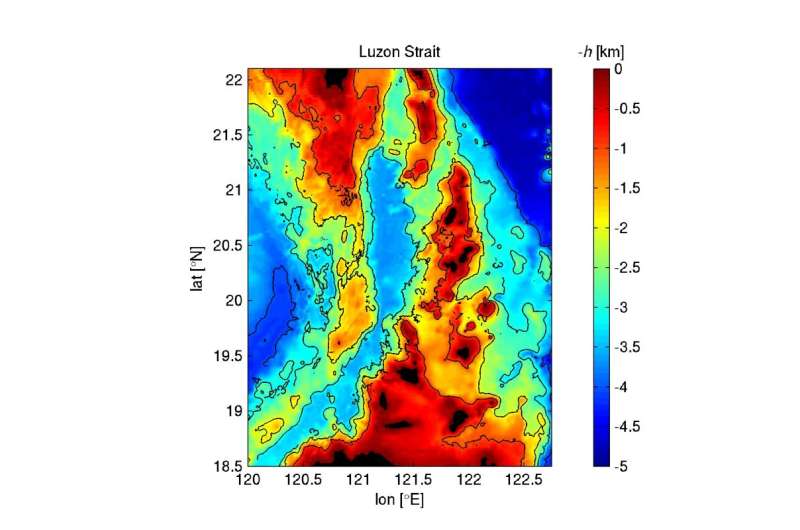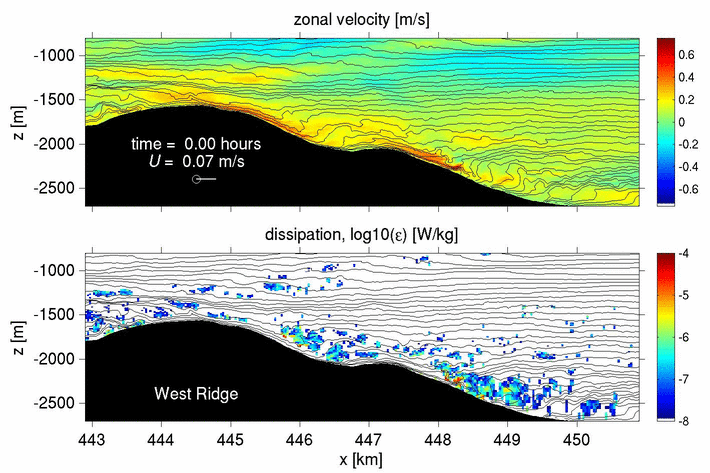Researchers measure giant "internal waves" that help regulate climate

Once a day, a wave as tall as the Empire State Building and as much as a hundred miles wide forms in the waters between Taiwan and the Philippines and rolls across the South China Sea – but on the surface, it is hardly noticed.
These daily monstrosities are called "internal waves" because they are beneath the ocean surface and though scientists have known about them for years, they weren't really sure how significant they were because they had never been fully tracked from cradle to grave.
But a new study, published this week in Nature Research Letter, documents what happens to internal waves at the end of their journey and outlines their critical role in global climate. The international research project was funded by the Office of Naval Research and the Taiwan National Science Council.
"Ultimately, they are what mixes heat throughout the ocean," said Jonathan Nash, an Oregon State University oceanographer and co-author on the study. "Without them, the ocean would be a much different place. It would be significantly more stratified – the surface waters would be much warmer and the deep abyss colder.
"It's like stirring cream into your coffee," he added. "Internal waves are the ocean's spoon."
Internal waves help move a tremendous amount of energy from Luzon Strait across the South China Sea, but until this project, scientists didn't know what became of that energy. As it turns out, it's a rather complicated picture. A large fraction of energy dissipates when the wave gets steep and breaks on the deep slopes off China and Vietnam, much like breakers on the beach.
But part of the energy remains, with waves reflecting from the coast and rebounding back into the ocean in different directions.
The internal waves are caused by strong tides flowing over the topography, said Nash, who is in OSU's College of Earth, Ocean, and Atmospheric Sciences. The waves originating in Luzon Strait are the largest in the world, based on the region's tidal flow and topography. A key factor is the depth at which the warm- and cold-water layers of the ocean meet – at about 1,000 meters.

The waves can get as high as 500 meters tall and 100-200 kilometers wide before steepening.
"You can actually see them from satellite images," Nash said. "They will form little waves at the ocean surface, and you see the surface convergences piling up flotsam and jetsam as the internal wave sucks the water down. They move about 2-3 meters a second."
The waves also have important global implications. In climate models, predictions of the sea level 50 years from now vary by more than a foot depending on whether the effects of these waves are included.
"These are not small effects," Nash said.
This new study, which was part of a huge international collaboration involving OSU researchers Nash and James Moum – as well as 40 others from around the world – is the first to document the complete life cycle of these huge undersea waves.
More information: "The formation and fate of internal waves in the South China Sea" Nature 521, 65–69 (07 May 2015) DOI: 10.1038/nature14399
Journal information: Nature
Provided by Oregon State University



















